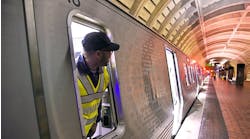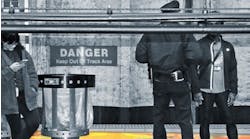Fewer downtown corners where motorists can turn right on red. A hundred dangerous intersections where pedestrians get a three-to-five-second jump before the light for cars turns green.
Intersections where vehicular traffic is stopped for 14 seconds every other light cycle to give pedestrians a chance to cross in every direction, including diagonally. Those innovative ideas - along with narrower streets and slower speed limits - may soon be coming to downtown Chicago to level a playing field that, newly appointed Transportation Commissioner Gabe Klein maintains, has put pedestrians at a "distinct disadvantage."
Klein is the former Washington, D.C., transportation chief who expanded the trolley system in the nation's capital and launched that city's bike-sharing program while making streets safer for pedestrians. Now, he wants to do the same thing in Chicago, in part, by giving pedestrians a running start at the most dangerous downtown intersections. "The thing I'm most worried about is young people and the elderly. They are at the most distinct disadvantage," Klein said. "We'd like to put in leading pedestrian intervals at over 100 intersections, particularly the most dangerous. As soon as the light turns green, cars hit the gas. This way, the light stays red and the pedestrian countdown will start three-to-five seconds before the light for traffic turns green." Klein also wants to get rid of what he calls "unnecessary" right- and left-turns-on-red that "put pedestrians at risk," adding, "The more turns you have, the more conflicts you produce. We understand that people need to turn [right on red]. But, they don't necessarily need to turn at every intersection." And he wants to revive an idea that got its start in the 1940s. It's called a "pedestrian scramble" or "Barnes Dance" intersection where the light in all directions stays red for 14 seconds every other light cycle so pedestrians can cross - not four ways, but six ways, including diagonally. "It's something we would be interested in piloting at the busiest intersections," Klein said. "It would make an intersection dramatically safer for pedestrians to navigate and easier for cars as well. No turns. Just a red light and a green light. They don't have to worry about hitting a pedestrian." In 2004, a top aide to then-Mayor Richard M. Daley proposed that 303 traffic control aides be empowered to ticket pedestrians who push the envelope and tie up downtown traffic - either by crossing against the crosswalk or within the crosswalk, but against the light. That plan by Andrew Velasquez, then-executive director of the city's Office of Emergency Management and Communications, was ridiculed and sandbagged by Daley. Klein said he's planning to launch a massive education plan for pedestrians and bicycle riders. But, he's not about to start punishing them. "We want to make it safer for them before we start coming down on people," the commissioner said. He added, "It's not that people want to break the law. It's just that we've prioritized automobiles since post-World War II. It's made pedestrians and cyclists feel at a distinct disadvantage. We're gonna put the streets back closer to the way they were before the urban expressways were built in the late '50s. We're trying to go back to a time when things were more balanced." Klein's plan to make the streets safer for pedestrians also includes what he calls "road diets" that narrow streets to slow down traffic. He also wants to crack down on speeding, particularly by taxicabs responsible for 28 percent of all accidents and reduce speed limits on residential streets, as proposed by Northwest Side Ald. Marge Laurino (39th).
Copyright 2008 LexisNexis, a division of Reed Elsevier Inc. All rights reserved.
Terms and Conditions | Privacy Policy

